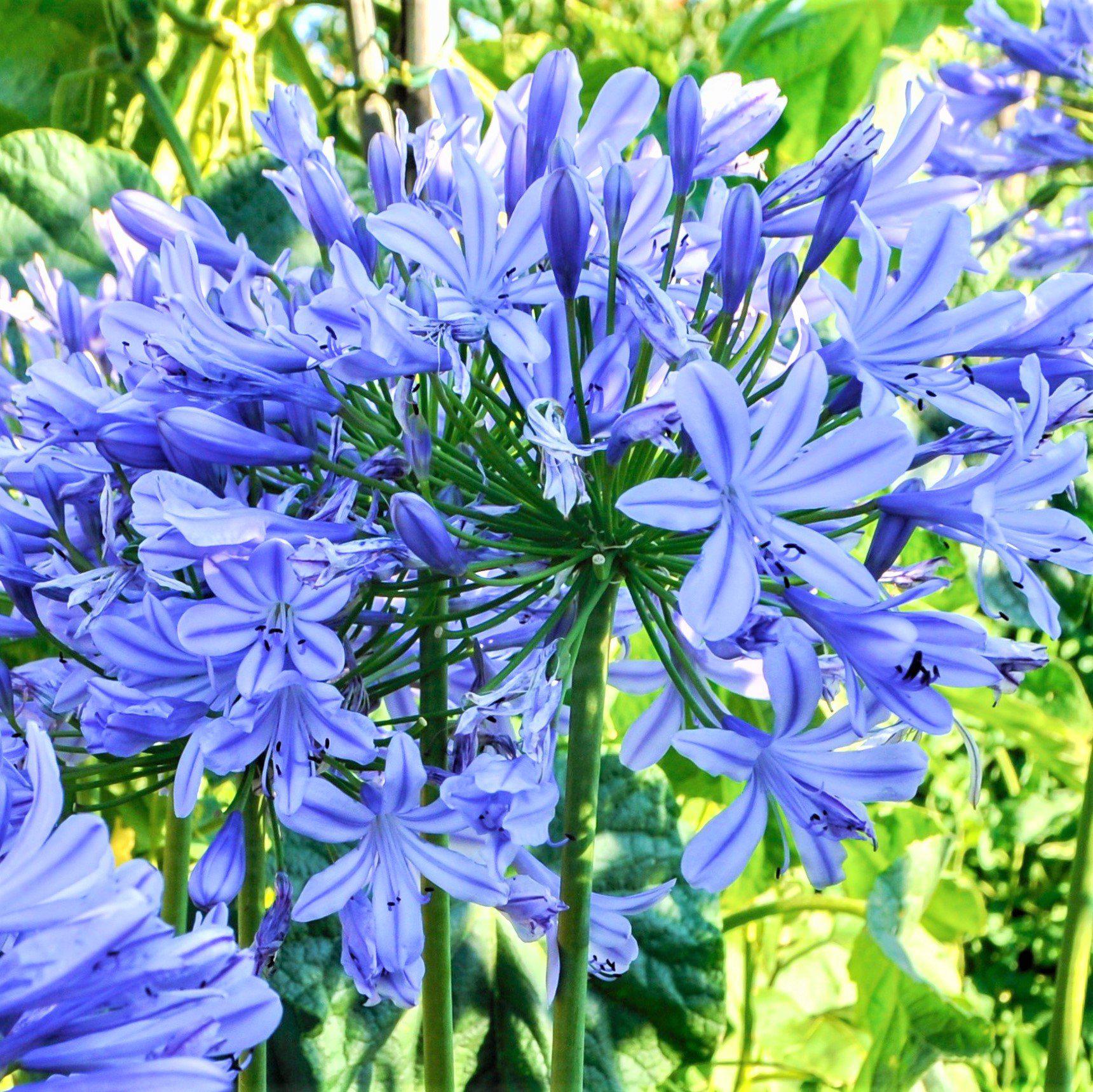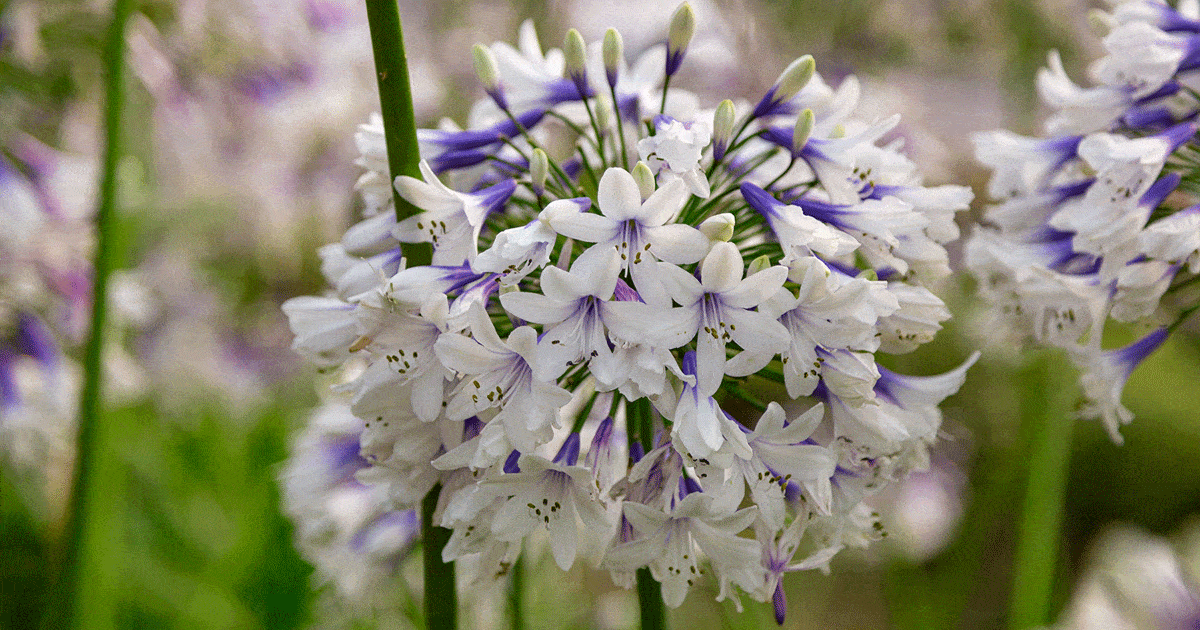Typical Agapanthus Issues and How to Solve Them
Typical Agapanthus Issues and How to Solve Them
Blog Article
Unleashing the Secret to Successful Agapanthus Farming: Tips and Tricks for a Flourishing Yard
In the realm of horticulture, cultivating agapanthus efficiently needs a calculated approach that incorporates various elements of plant care. With mindful focus to information, one can open the secrets to nurturing these stunning flowers, leading to a garden that grows with beauty and vibrancy. By recognizing the subtleties of agapanthus growing, one can develop an environment where these plants prosper and grow generously. In the following discussion, we will check out essential suggestions and methods that will certainly assist you towards a growing agapanthus yard, providing understandings right into finest techniques, soil problems, sprinkling techniques, and more.
Planting Agapanthus: Best Practices
When growing Agapanthus, proper soil prep work is crucial for guaranteeing effective development and growth of these stunning blossoms. Agapanthus, commonly referred to as Lily of the Nile or African lily, thrives in well-draining soil with a somewhat acidic to neutral pH degree - Agapanthus. Before planting, it is vital to amend hefty clay dirts with raw material such as garden compost or peat moss to boost drainage and offer necessary nutrients for the plants
To grow Agapanthus, select a place that gets complete sunshine to partial color, as this will certainly advertise healthy and balanced development and bountiful blooming. Dig an opening two times the size of the plant's origin round and position the Agapanthus at the very same depth it was previously growing. Carefully backfill the opening with dirt, weighing down firmly to remove any air pockets around the origins.
Water the freshly grown Agapanthus completely and remain to maintain the soil uniformly damp, specifically throughout the plant's energetic expanding season. Agapanthus. Applying a balanced plant food once a month can better sustain the plant's growth and flowering. By complying with these finest methods for planting Agapanthus, you can create a stunning display screen of these fascinating flowers in your garden
Ideal Dirt Issues for Agapanthus
For ideal growth and blooming success of Agapanthus plants, ensuring the dirt conditions are perfect is essential. Agapanthus flourishes in well-draining soil with a somewhat acidic to neutral pH level ranging from 6.0 to 7.0. This sort of dirt enables sufficient water drainage, preventing waterlogging which can bring about root rot. To boost dirt water drainage, consider including natural issue such as garden compost or peat moss when preparing the planting site. In addition, Agapanthus favors soil that is abundant in nutrients, so integrating a well balanced fertilizer throughout the growing season can advertise healthy and balanced growth and vivid blooms.

Watering and Feeding Tips
To ensure healthy growth and dynamic flowers, proper watering and feeding strategies are important for successful Agapanthus farming. Agapanthus plants gain from routine watering, particularly during the growing season. It is recommended to water deeply as soon as a week, making sure the dirt is damp however not soaked. During hot weather condition or in pots, more frequent watering might be essential to protect against the dirt from drying out completely.
When it comes to fertilizing Agapanthus, a balanced plant food with equivalent components nitrogen, phosphorus, and potassium can be used in the spring to advertise healthy and balanced development and flowering. Slow-release fertilizers are ideal for supplying nutrients slowly over an extended duration. Avoid over-fertilizing, as this can bring about extreme foliage development at the expense of blossoms.
Additionally, including organic matter like compost right into the soil can boost nutrient levels and boost dirt structure, assisting in the general wellness of the Agapanthus plants. By adhering to these watering and fertilizing suggestions, garden enthusiasts can ensure their Agapanthus plants flourish and create spectacular display screens of flowers.
Pruning and Deadheading Methods
Appropriate pruning and deadheading strategies play an essential duty in preserving the health and visual appeals of Agapanthus plants, enhancing the important techniques of watering and feeding for successful growing. Trimming Agapanthus involves eliminating invested flower heads, dead or yellowing leaves, and general shaping of the plant to advertise better growth. Deadheading, the procedure of removing faded blossoms, not only improves the plant's look but also urges more blooming.
When deadheading Agapanthus, it is recommended to trim off the blossom stem at the base using sharp, clean shears. This process reroutes the plant's power from seed production back right into origin and foliage growth, advertising a much healthier and extra robust plant. Routine deadheading can expand the blooming period of Agapanthus and stop self-seeding, which can lead to overcrowding.
In terms of pruning, Agapanthus generally take advantage of a light trim after flowering to clean up the plant and urge fresh development. Cutting back the spent flower stems and getting rid of any dead or broken vegetation helps maintain the plant's vigor and total look. Nonetheless, it is important to prevent reducing right into the crown of the plant, as this can damage its health.

Protecting Agapanthus From Vermins and Diseases
Executing effective bug and illness administration methods is critical Home Page to securing the health and wellness and vitality of Agapanthus plants in growing. Agapanthus are usually sturdy plants, yet they can still fall victim to numerous bugs and illness otherwise correctly cared for. One usual bug that impacts Agapanthus is the Agapanthus borer, a caterpillar that tunnels right into the plant, triggering damages to the blossoms and fallen leaves. To stop problems, routine evaluation of the plants is vital. If borers are discovered, they can be by hand removed, or insecticidal soap can be utilized as a control measure.
In enhancement to bugs, Agapanthus are vulnerable to illness such as origin rot and fungal leaf areas. These concerns can commonly be avoided click to find out more by ensuring correct drainage and staying clear of overwatering. Impacted parts of the plant need to be quickly removed to avoid additional spread if indicators of condition show up. Fungicides may likewise be made use of as a therapy measure, complying with the manufacturer's guidelines meticulously. By remaining vigilant and attending to pest and illness concerns quickly, garden enthusiasts can help their Agapanthus prosper and prosper.

Verdict
In conclusion, successful growing of agapanthus needs correct growing strategies, perfect dirt conditions, adequate watering and feeding, routine trimming and deadheading, and defense from parasites and conditions. By complying with these tricks and suggestions, gardeners can make certain a growing yard full of stunning agapanthus flowers. Agapanthus. Keep in mind to keep consistent care and interest to detail to advertise the wellness and long life look at these guys of these magnificent plants
When growing Agapanthus, proper soil preparation is vital for guaranteeing successful growth and development of these gorgeous flowers.Water the freshly grown Agapanthus completely and continue to maintain the soil evenly wet, particularly during the plant's active expanding period.For optimal development and blooming success of Agapanthus plants, guaranteeing the dirt problems are optimal is essential. When planting or transplanting Agapanthus, ensure the soil is well-prepared to give the necessary foundation for the plants to establish themselves successfully. One common parasite that influences Agapanthus is the Agapanthus borer, a caterpillar that passages into the plant, causing damages to the leaves and flowers.
Report this page